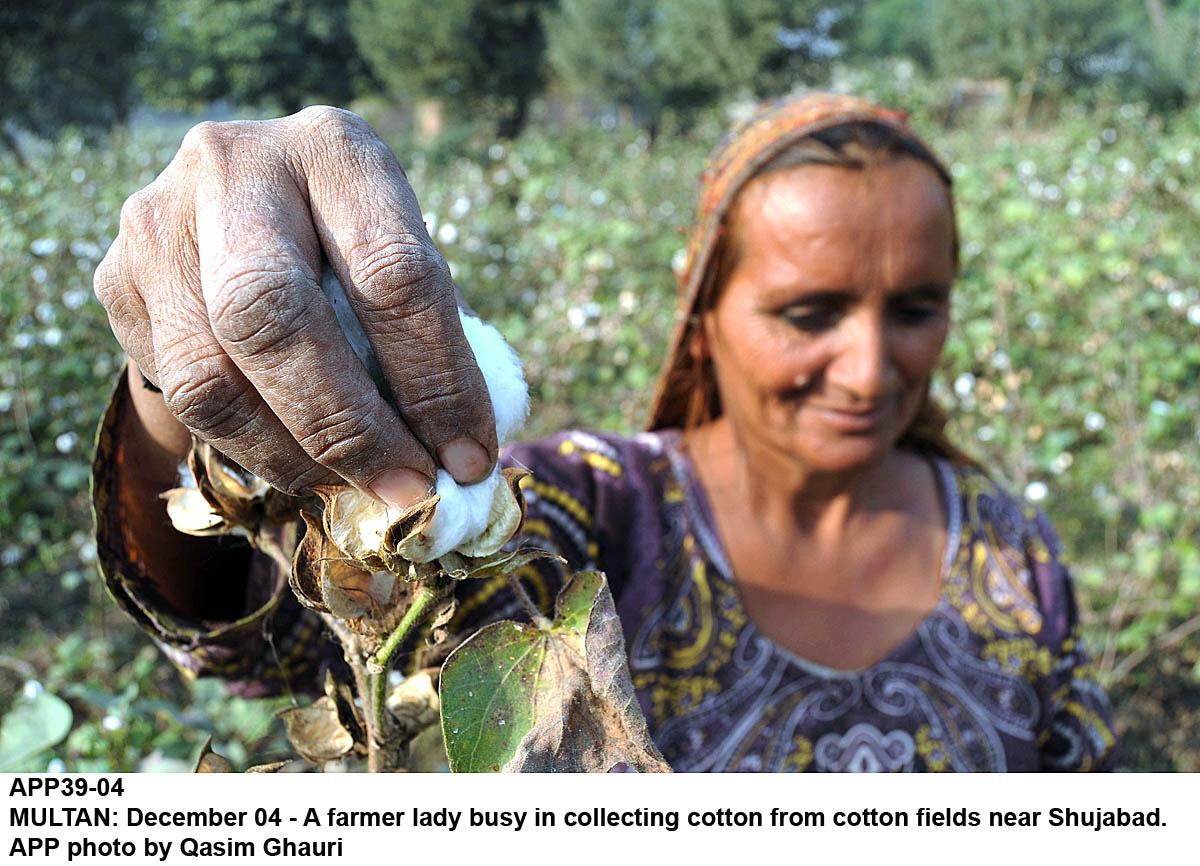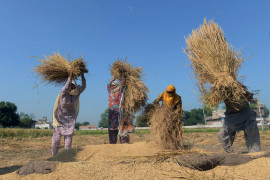
The gamble paid off. Khatoon, 35, says she has nearly doubled her wage in the past year, now taking home $3.50 a day compared to $2.
Illiterate women like Khatoon make up the bulk of the estimated half a million cotton pickers in the country, the world’s fourth largest cotton producer, after China, India and the United States, but their working conditions are often poor.
Pakistan is one of the few Asian countries where agricultural wages have gone down, not up, in the past 10 years, according to the Overseas Development Institute (ODI), Britain’s leading international development and humanitarian think tank.
The ODI said wages in rural areas are rising across Asia, driven by a slowdown in population growth, increasing agricultural productivity and migrants moving to cities but Pakistan remains one of the few exceptions.
Power shortages plague the factories. Agricultural productivity is stagnant. Landlords are hugely powerful.
Agricultural wages in Pakistan have a massive impact on women, and in turn on their families. About 74 per cent of working women aged 15 are employed in agriculture, according to the International Labour Organisation.
The 2014 Global Gender Gap Report published by the World Economic Forum ranked Pakistan as the second worst country in the world in gender equality after Yemen. Women’s agricultural wages fall to an average of $1.46 a day in 2012 from around $1.68 in 2007, said the ODI in its recent Rural Wages in Asia report.
On top of the meagre wages, women labourers also tell labour activists that landlords or managers will sometimes try to cheat them of their rightful money because they cannot read the records. Heat stroke, snake bites, exposure to pesticides and cuts on their hands from handling the rough cotton bolls are other hazards of their daily toil.
Khatoon and others have started bringing their school-age children to check the books, or tie knots in the edge of their colourful saris to count how many days they have worked.
Pakistan Central Cotton Committee’s Muhammad Ali Talpur says owners are sympathetic to the workers’ problems but warns paying much higher wages may drive cotton farmers out of business.
Global cotton prices have fallen, hitting a five-year low this summer due to slowing demand from China, a glut in the market, and growing popularity of manmade fibres. Pakistan produces about 13 million bales a year from a world total of about 119 million bales.
Karim Ullah, who owns a small cotton farm near Meeran Pur, agreed to pay his workers $3 per day this year but said he couldn’t raise wages further unless cotton prices rose.
“We pay wages according to the rate at which the cotton is sold. Only if the going price increases can I pay the pickers more,” he said. “Also, I’m just a small farmer. It’s the big landlords with hundreds of acres who set the rate.”
Published in The Express Tribune, December 6th, 2014.
Like Business on Facebook, follow @TribuneBiz on Twitter to stay informed and join in the conversation.













































COMMENTS
Comments are moderated and generally will be posted if they are on-topic and not abusive.
For more information, please see our Comments FAQ